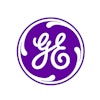Flash echo imaging could make ultrasound a player in identifying liver metastases, finding lesions that are too minute to be seen with conventional sonography, according to German and Japanese researchers.
Flash echo is a harmonic imaging approach that attempts to avoid a common problem in contrast studies: when sonication by an ultrasound beam destroys the contrast microbubbles. Flash echo permits "flexible, intermittent scanning with variable intervals, a variable number of frames at the trigger and simultaneous monitoring at lower power output," wrote a team from Toshiba's Medical Engineering Laboratory in a 1999 Ultrasound in Medicine and Biology article.
This interval imaging is what gives flash echo an edge over traditional ultrasound for evaluating liver carcinoma, said Dr. Dirk Becker from the department of medicine at Friedrich-Alexander University in Erlangen-Nuremberg, Germany.
"Metastases can be missed with conventional gray-scale ultrasound," he explained in a presentation at the American Institute of Ultrasound in Medicine meeting in April. "When the scan conditions are poor, metastases that are very small can be missed. Dual-phase spiral CT is the current gold standard, and maybe in the future it will become MRI, but I think contrast-enhanced ultrasound will play a very important role in the detection of liver metastases."
Becker and his group scanned 28 patients with known liver metastases, first with conventional spiral CT. The number of metastases found on CT, 63 in 28 patients, was used for reference. Gray-scale ultrasound and flash echo with a wideband harmonic imaging technique were performed using a Siemens Elegra machine. The transmitting frequency was 2 MHz, and the group used Molecular Biosystems' Optison contrast agent. One blinded reader reviewed the videotapes.
"We tried to get the optimal situation (with flash-echo imaging)," Becker said. "We waited at least 40 seconds after the bolus injection. When we saw that the liver did not become white, we stopped, waited a few more seconds and then scanned again. When the liver had lit up because of the contrast injection, we had between 30 and 40 seconds so we could get more than just a couple of scans."
Flash echo detected 61, or 98.3%, of all lesions. Conventional ultrasound found 47, or 74.6%, of the metastases. Two lesions that were missed with flash echo had diameters of 12 mm to 15 mm and were located near the diaphragm. The fact that the lesions were up so high most likely hindered proper imaging, Becker said.
"Flash echo imaging can increase detection of liver metastases in carcinoma patients, especially when the metastases are isoechoic or hypoechoic compared to the surrounding liver tissue," he concluded.
In a second study, Becker's group used flash echo for therapy control after radiofrequency ablation of liver tumors -- an area where conventional gray-scale ultrasound cannot distinguish successful treatment, Becker said.
"The exact delineation of the necrotic area is absolutely necessary to monitor the lesion. So far, it is only possible with spiral CT," he said.
In this study, 18 patients who underwent radiofrequency ablation due to a variety of liver tumors were examined with flash echo and spiral CT. Ultrasound was performed with the Siemens Elegra scanner, using wideband harmonic imaging in flash-echo mode. Once again, the contrast agent was an Optison bolus injection of 1 ml.
After an interval delay of 30 seconds, the tumor area was scanned in one sweep and the images were reviewed. While all lesions treated with radiofrequency ablation were visible on a gray-scale image, flash echo provided much better demarcation, Becker said. The mean score for demarcation was 8.9 with flash echo, compared to 4.8 in the conventional mode.
In another flash echo presentation at the AIUM conference, a team from the Toshiba Center for Research and Development at Kyoto University in Tochigi, Japan used real-time subtraction flash echo of the liver to evaluate viable lesions after ablation therapy. This involves subtracting digital signals from the second frame following the first frame in order to decipher signals from the microbubbles.
The study sample consisted of 10 patients. All had hepatocellular carcinoma, and five had undergone radiofrequency ablation or alcohol ablation therapy.
The suspension time varied between 1-5 seconds, and the frame number was set from 2-10 for flash echo, said Dr. Fuminori Moriyasu. Subtraction was performed during flash echo after intravenous injection of Levovist and Optison contrast agents. Dual images -- flash echo on one side and real-time subtraction on the other -- were displayed.
Subtraction harmonic imaging was able to depict homogenous staining in the liver. Contrast enhancement was more prominent on the subtraction images than on the first frame of the flash echo. As a result, viable lesions with decreased blood perfusion were clearly depicted, the study reported.
By Shalmali Pal
AuntMinnie.com staff writer
May 2000
Related Reading
"Flash echo imaging," Nippon Rinsho: Japanese Journal of Clinical Medicine, April 1998, Vol.56:4, pp.886-890
"Hepatocellular carcinoma: radio-frequency ablation of medium and large lesions," Radiology, March 2000, Vol. 214:3, pp.761-768
"Analysis of flash echo from contrast agent for designing optimal ultrasound diagnostic systems," Ultrasound in Medicine and Biology, March 1999, Vol. 25:3, pp.411-420
"Radio-frequency ablation of hepatic metastases: post-procedural assessment with a US microbubble contrast agent - early experience," Radiology, June 1999, Vol .211:3, pp.643-649
Let AuntMinnie.com know what you think about this story.
Copyright © 2000 AuntMinnie.com

















